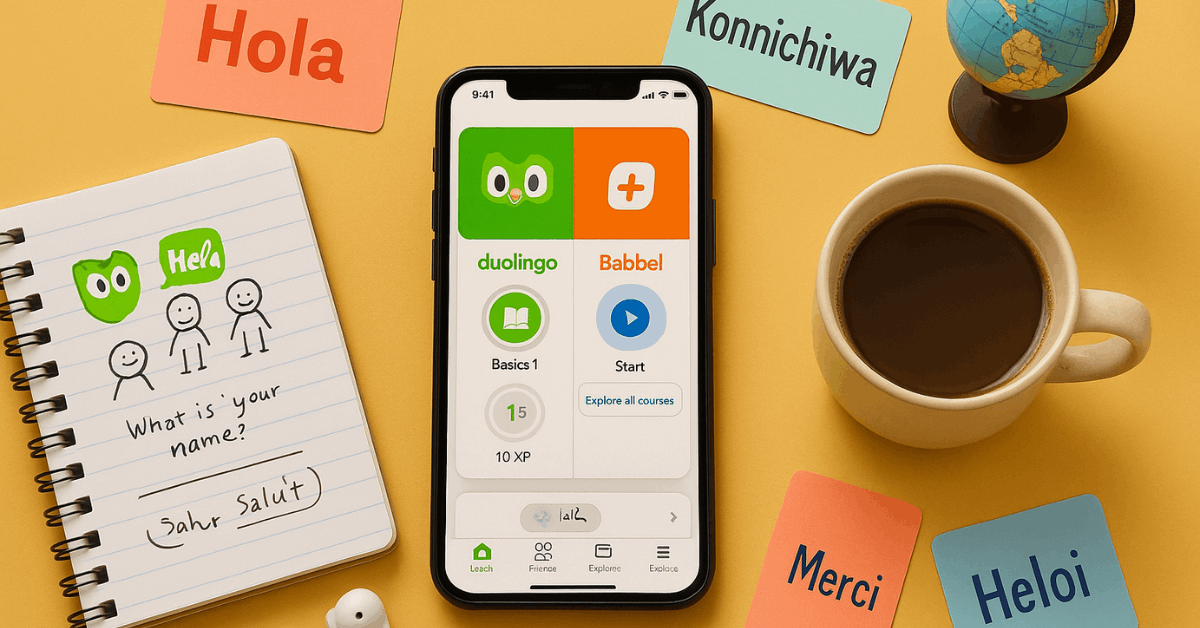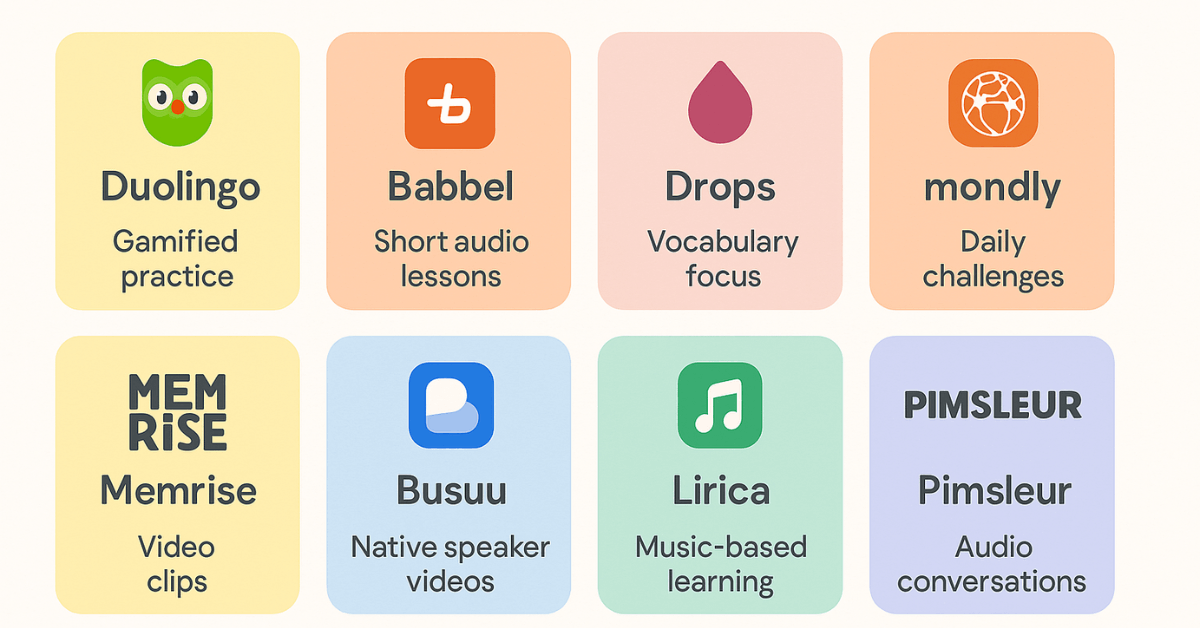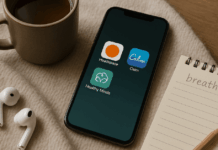Learning a new language rewards you every day, from ordering food abroad to boosting confidence in global job interviews.
Apps designed for independent learners streamline the process, letting you study anywhere and track steady progress without attending formal classes.
The overview that follows highlights leading options available worldwide, explaining how each one matches different learning styles, budgets, and commitment levels.
Why Mobile Apps Accelerate Your Progress Worldwide
Mobile platforms deliver bite-sized lessons, AI-driven feedback, and friendly reminders that keep motivation high even when free time is scarce.
You gain instant access to vocabulary drills, pronunciation practice, and cultural context instead of juggling thick textbooks or irregular in-person courses.
Matching an App to Your Learning Style
Selecting the right tool matters more than downloading every popular name on the market.
Focus on features that align with personal goals, preferred study methods, and schedule constraints.
- Language availability — confirm the app supports target languages beyond the usual Spanish or French selection.
- Learning mode — decide if video clips, audio podcasts, or interactive games fit attention patterns best.
- Speaking feedback — look for real-time pronunciation correction if conversational fluency ranks high on your goal list.
- Offline access — ensure lessons remain available during flights, commutes, or data-poor regions.
- Subscription pricing — weigh monthly fees against long-term discounts and lifetime plans to avoid cost surprises.
What are the Top Reliable Apps to Learn a New Language?
Each solution below excels in a specific area, giving you clear reasons to pick one—or combine several—based on individual study preferences.
Duolingo — Wide Language Catalog and Gamified Practice
Duolingo offers more than forty languages and turns daily drills into a points-based game that encourages consistent study streaks.
Bright illustrations, short exercises, and immediate corrections keep engagement high without overwhelming newcomers. You can juggle multiple languages simultaneously, though two at once is advisable to maintain retention.
Pros:
- Substantial free tier covers core lessons.
- Streak tracking nurtures accountability.
- “Stories” feature tests comprehension through mini-audio narratives.
Cons:
- FAQ pages provide limited pricing clarity.
- Premium tiers vary by region, and Duolingo Max remains restricted to selected countries and iOS users.

Babbel — Structured Lessons That Feel Like Class
Babbel mirrors an online school curriculum, presenting fifteen-minute lessons that combine translations, pronunciation guides, and bite-sized grammar explanations.
Clean layouts reduce cognitive overload, and optional live classes pair you with tutors and up to five peers for real-time conversation.
Pros:
- Minimalist interface supports sustained focus.
- My Activity dashboard tracks progress in detail.
- Live classes supply human interaction when desired.
Cons:
- Only fourteen languages are available.
- Full course access requires a paid plan, and annual pricing sits on the higher side for budget learners.
Drops — Picture-Driven Vocabulary for Visual Thinkers
Drops leans on striking visuals and brisk word-association exercises, making even scripts such as Greek less intimidating. Free users wait ten hours between sessions, while premium subscribers enjoy unlimited practice across fifty languages.
Pros:
- Image-first design aids memory retention.
- Most features remain accessible without payment.
- Constantly expanding course list broadens choices.
Cons:
- Mandatory downtime for free accounts slows momentum.

Mondly — Phrase Retention Through Multisensory Cues
Mondly combines images, melodic voiceovers, and touch interactions to help phrases stick.
Tapping verbs reveals conjugation tables, supporting grammar insight on demand. Augmented and virtual reality add immersive scenarios when paired with compatible headsets.
Pros:
- Forty-one languages cater to diverse interests.
- VR and AR lessons simulate real-world chats.
- Many starter modules cost nothing.
Cons:
- Detailed subscription information is hidden deep within the website.
- Lifetime access commands a premium price.
Memrise — Real Voices and Casual Speech
Memrise features thousands of short videos from native speakers, exposing you to authentic intonation and colloquial expressions.
Pattern-spotting exercises teach grammar implicitly, while the skip option lets experienced learners bypass familiar material.
Pros:
- Native videos sharpen listening realism.
- Skip feature personalizes the lesson flow.
Cons:
- Pro membership costs more than several competitors.
- Subscription tiers may exceed tight student budgets.
Busuu — Goal-Based Roadmaps and Progress Tracking
Busuu tailors study plans after you set proficiency targets and preferred weekly time blocks. The app then projects a date for reaching conversational or advanced levels, adjusting reminders to maintain pace.
Pros:
- Custom goals anchor motivation.
- Vocabulary review flags weak words automatically.
Cons:
- Fourteen-language catalog feels narrow compared with rivals.
- Full lesson library sits behind a premium paywall.
Lirica — Learning Through Lyrics and Culture
Lirica transforms popular songs from artists such as Shakira into interactive grammar and vocabulary lessons. Cultural notes deepen understanding while melodic repetition embeds new words effortlessly.
Pros:
- Engaging music-first method breaks monotony.
- Annual plan ranks among the most affordable.
Cons:
- Only Spanish, German, and English currently supported.
- Smaller song library limits genre variety.
Language Reactor — Subtitled Films for Immersive Study
Language Reactor, a Chrome extension, overlays dual subtitles on Netflix content, syncing dialogue word by word like karaoke. You pause, replay, and look up unfamiliar terms within the same window, turning evening entertainment into focused immersion.
Pros:
- Free installation delivers high-value learning.
- Catalog lists hundreds of shows across fifty-plus subtitle languages.
Cons:
- Requires an active Netflix subscription/
- Compatibility stops at other major streaming services.
Pimsleur — Hands-Free Audio Lessons for Busy Schedules
Pimsleur delivers thirty-minute spoken lessons formatted like podcasts, ideal for commutes or workouts. Driving mode integrates with CarPlay and Android Auto, and downloadable sessions suit offline scenarios.
Pros:
- Emphasis on listening and speaking promotes real dialogue skills.
- Fifty-one languages cover mainstream and less common options.
Cons:
- Seven-day trial ends quickly.
- Learners seeking reading and writing exercises may feel underserved.
Rosetta Stone — Comprehensive, Customizable, AR-Enhanced
Rosetta Stone remains a heavyweight with image-based drills, customizable learning paths, and an augmented-reality feature that translates objects captured by your camera.
Core sessions take at least thirty minutes, demanding deeper focus while rewarding serious commitment.
Pros:
- Adaptive settings let you emphasize speech, reading, or writing.
- Seek and Speak AR gamifies everyday surroundings.
Cons:
- Subscriptions cost more than most alternatives.
- Longer lessons may challenge tight schedules.
Price Comparison Snapshot
A quick look at baseline costs helps budget-conscious learners decide which app delivers the best return on investment.
| App | Free Tier | Monthly Plan (USD) | Annual Plan (USD) | Lifetime Option |
| Duolingo | Yes | 13 | 84 | N/A |
| Babbel | First lesson | 18 | 108–250 | 599 |
| Drops | Yes | 13 | 70 | 160 |
| Mondly | Yes | 12 | 60 | 2 556 |
| Memrise | Limited lessons | 60 | 100 (often 80) | 325 |
| Busuu | Yes | 14 | 84 | 167 |
| Lirica | One-week trial | 9 | 25 | N/A |
| Pimsleur | Seven-day trial | 20 | 165 (All Access) | N/A |
| Rosetta Stone | Demo only | 60 (quarterly) | 240 | 400 |
Currency values may vary slightly across regional app stores, yet most providers honor similar worldwide pricing structures.
Frequently Asked Questions
Here are the most common questions students ask:
How should you start learning a new language?
Begin by combining vocabulary, pronunciation, and grammar exercises rather than isolating a single skill. Apps simplify this integration through guided paths, ensuring balanced progress without overwhelming detail.
Is a specific season best for beginning language study?
Any time works. Motivation matters more than calendar months, and mobile apps make it easy to start immediately regardless of holidays or academic terms.
How long does it take to reach conversational ability?
Consistent practice of ten to fifteen minutes daily typically yields basic conversational confidence within several months. Fluent mastery often requires a year or longer, depending on language complexity and personal dedication.
Can apps replace formal classes completely?
Apps cover foundational material, pronunciation drills, and cultural exposure at low cost, yet advanced learners may still benefit from live conversation partners, tutoring, or immersion travel to refine nuance and idiomatic usage.
Conclusion
You now have a clear map of standout language apps, each catering to different learning preferences, budgets, and lifestyle demands.
Select one aligned with your goals, commit to a realistic daily schedule, and let consistent practice turn worldwide conversations into achievable reality.





